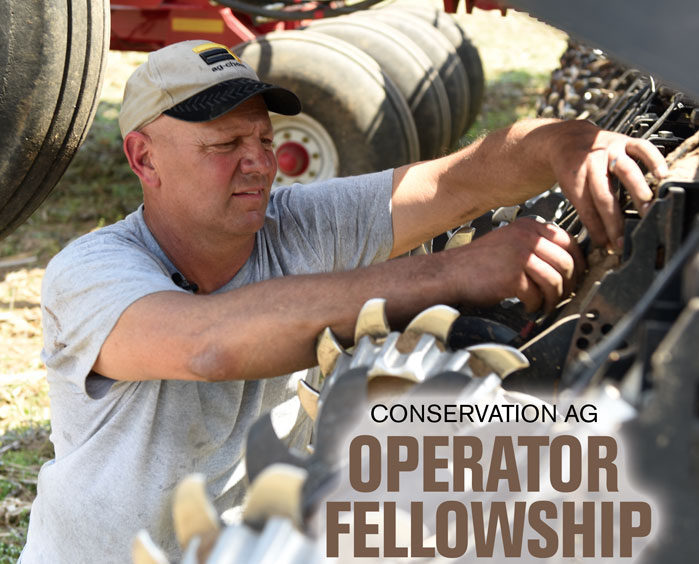No-Till Farmer
Get full access NOW to the most comprehensive, powerful and easy-to-use online resource for no-tillage practices. Just one good idea will pay for your subscription hundreds of times over.

Sparta, Wis., home to Jim Leverich, No-Till Farmer’s 2022 Conservation Ag Operator Fellow, is not far from the beautiful sandstone bluffs of the Mississippi River. Hugging the west-central part of the state, Leverich’s farm features a range of soils from sandy loam to heavier clay loam soils
The spring of 2022 found Leverich busy custom planting Mustang 4095 corn for a neighbor. As he got started, the row units of his 24-row Case IH 1245 rig set down into a low-growing plant with bright yellow flowers.
“This is shepherd’s purse. It’s a weed, but it really won’t hurt anything because it’s easy to kill,” he says. “So I don’t mind it — it kind of helps hold the soil in place like a cover crop.”
Leverich no-tills 1,000 acres of corn and soybeans on 20-inch rows, a configuration he settled on after doing years of research while working as an extension agent for the University of Wisconsin. Leverich is planting the neighbor’s corn about 2 inches deep at a population of 28,000, running at 5.6 mph. For his own fields, he uses a variable rate of 26,000-30,000 for the sandier soils and 32,000-33,000 on heavier soils.
NAME: Jim Leverich
LOCATION: Sparta, Wis.
ACRES: 1,000
YEARS NO-TILLING: 42 years
CROPS: Corn, soybeans
ANNUAL PRECIPITATION: 38 inches
PRIMARY SOIL TYPE: Sandy loam, clay loam
IRRIGATION: No
LIVESTOCK: No
That’s because the heavier soil can take the dry weather better,” he says.
Leverich generally doesn’t bother with a pre-emerge herbicide…